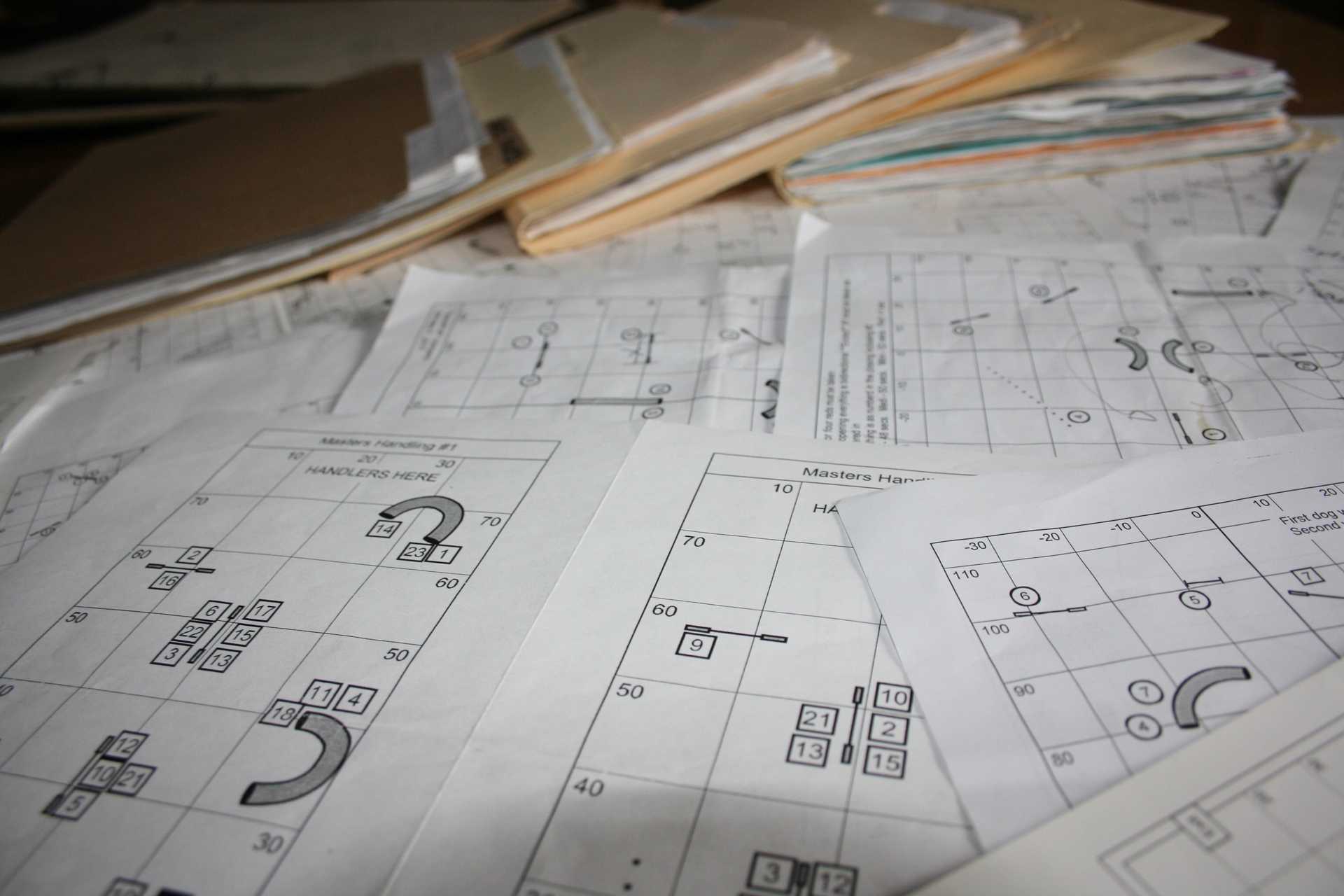Running Dearlove Intermediate Course of 16 Aug 2004
20 Aug 2004
This post updates my original thoughts about this course:
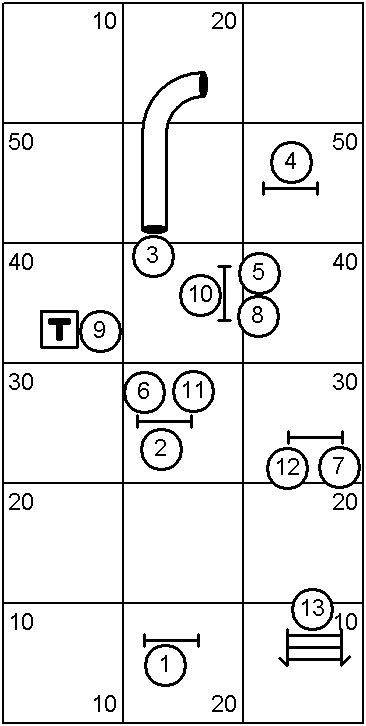
It turns out the students ran the course pretty much as I expected. So the only issues were:
- getting onto the Handlers Line Using the Handler Line - Front/Rear/Blind Cross LineHandler Line - Front/Rear/Blind Cross Line between jumps 4 and 5
- helping the dog around the 180 degree turn from jumps 6-7
- leading out and executing the front cross from jumps 10-11
- helping the dog around the 180 degree turn from jumps 11-12
- deciding on which side to turn the dog around jump 12
I was advising a number of handlers to step into the 180 degree turns and support the dog’s line through the turn. Otherwise they were allowing the dogs to approach the second jump at a very shallow angle; to the point that the dogs were coming off their left lead. This causes the dogs to jump long over the jump; forcing them to turn sharply to the next jump after landing. This further disrupted the line through the next two obstacles. These two approaches are shown below.
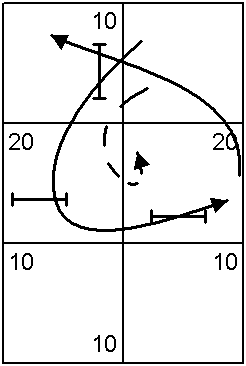
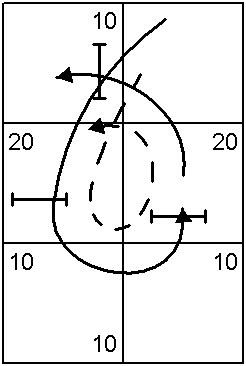
To wrap the dog tight around jump 10 a solid front cross over jump 10 with an early cue for the front cross seemed the most effective method for getting the dog to short stride over the jump. It was important that handlers get the dogs onto their left lead before taking Jump 11 so they would be setup for the final two jumps.
At this same point of the course, we got to discuss dogs having a lead leg and the impact it has on how a dog can maneuver on the course. I believe this impacts the decision as to whether to take jump 12 with the dog turning left or turning right. Turning the dog to the left keeps the dog on their left lead. Turning them to the right requires changing their lead (either before jump 12 by a front cross or after it by a rear cross). Changing the dog’s lead is not necessarily a bad thing. On this course I saw that it was easier to keep the dog on the left lead, turn left and then wrap tight to the jump standard. The following two diagrams show how the two approaches played out.
Once we decided on a left turn after jump 12, I asked the handlers to try using both a Post Turn Learning the Post TurnPost Turn/Shoulder Pull/Pivot Turn and a Front Cross Learning the Front Cross - VideoFront Cross. Handlers whose dogs had good focus on their handlers (and their handler’s hands) were more successful with the Front Cross. The Front Cross was a little faster since the handler stayed ahead of the dog and that pulled the dog into a sharper turn and a faster acceleration to the triple jump.
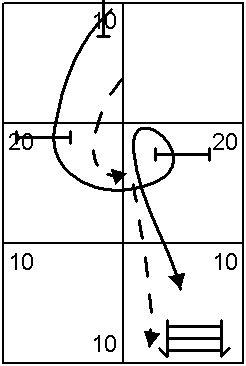
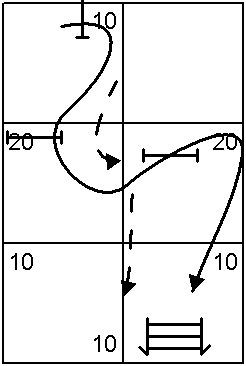
For another course using the same setup please see article
If you enjoyed this article won't you please:  Thanks!
Thanks!
Related Tags
Related Articles:
- Running Dearlove Agility Intermediate Course of 29 Aug 2004
- Running Dearlove Intermediate Course of 4 Oct 2004
- Running Dearlove Intermediate Course of 20 Sep 2004
- Running Dearlove Advanced Course of 16 Aug 2004
- Dearlove Nested Class Course - Jul 25 & Aug 1 2005
- Dearlove Intermediate Course - Front vs. Rear Crosses
